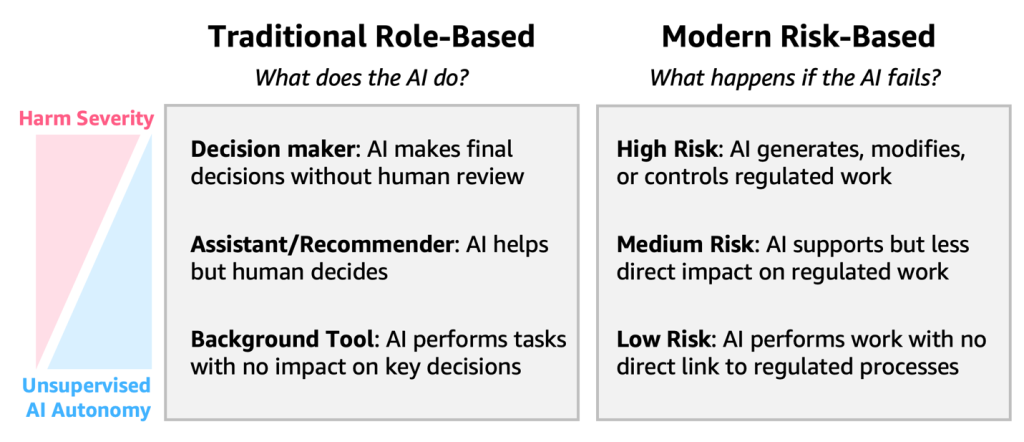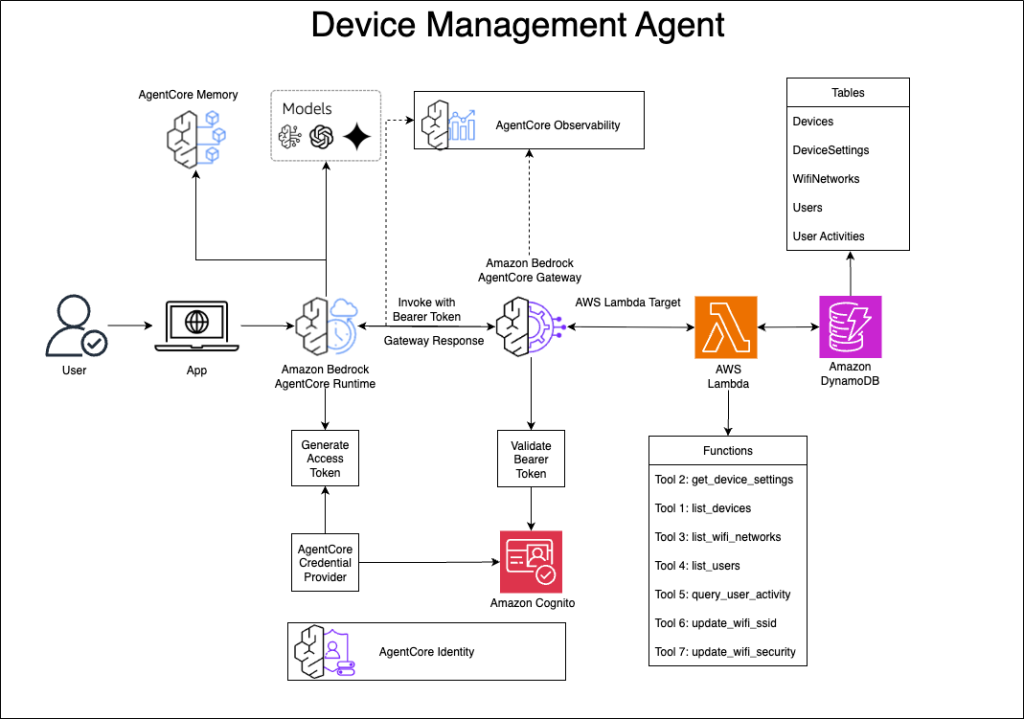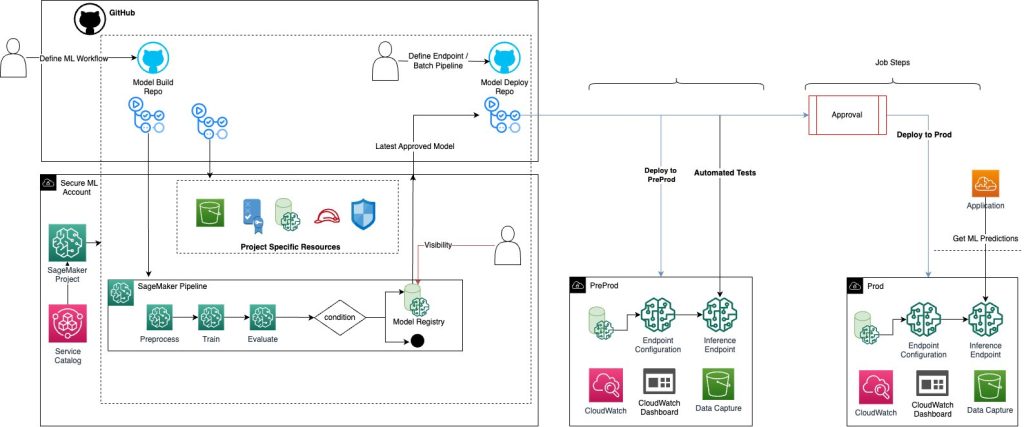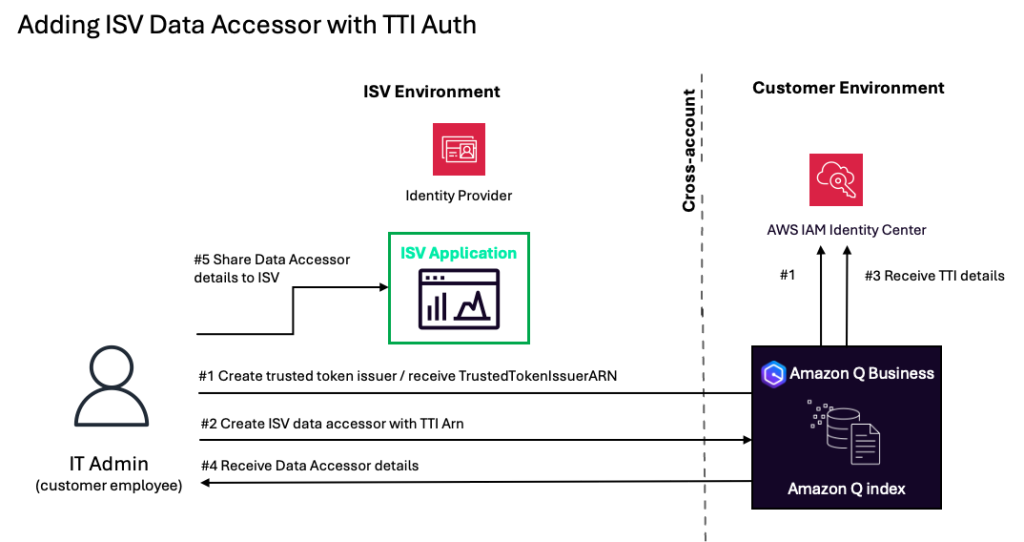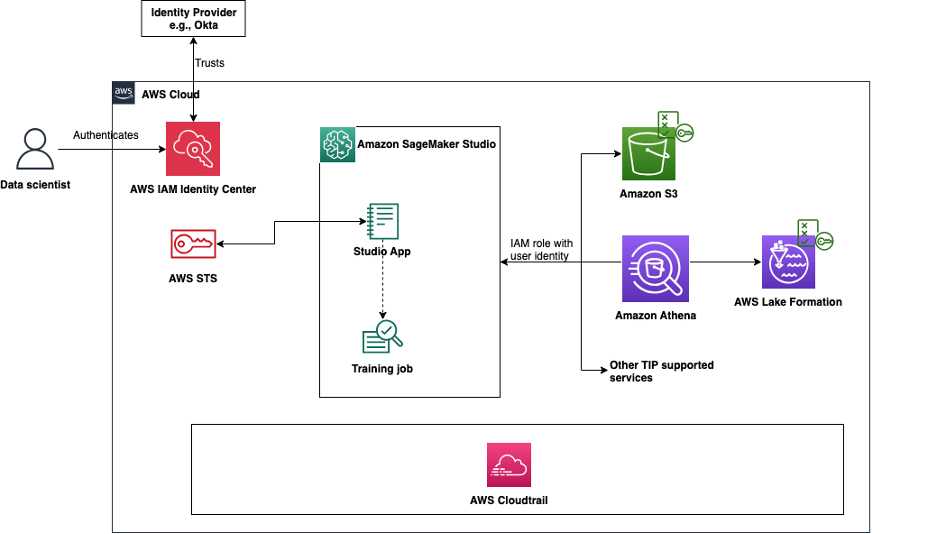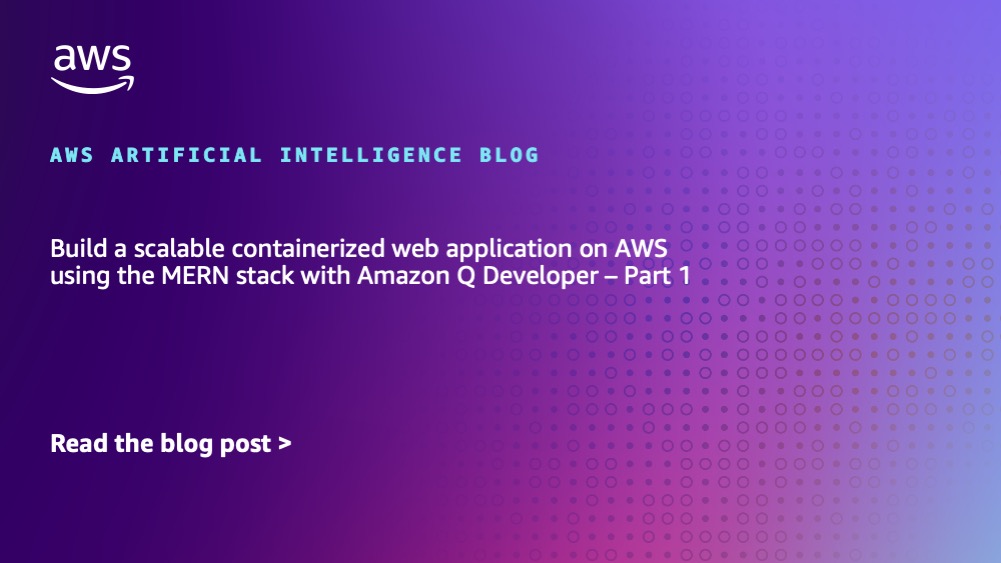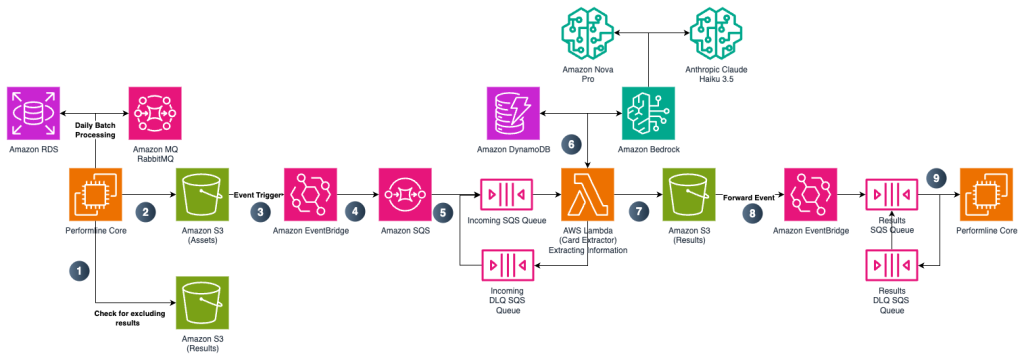Artificial Intelligence
Category: Security, Identity, & Compliance
A guide to building AI agents in GxP environments
The regulatory landscape for GxP compliance is evolving to address the unique characteristics of AI. Traditional Computer System Validation (CSV) approaches, often with uniform validation strategies, are being supplemented by Computer Software Assurance (CSA) frameworks that emphasize flexible risk-based validation methods tailored to each system’s actual impact and complexity (FDA latest guidance). In this post, we cover a risk-based implementation, practical implementation considerations across different risk levels, the AWS shared responsibility model for compliance, and concrete examples of risk mitigation strategies.
Voice AI-powered drive-thru ordering with Amazon Nova Sonic and dynamic menu displays
In this post, we’ll demonstrate how to implement a Quick Service Restaurants (QSRs) drive-thru solution using Amazon Nova Sonic and AWS services. We’ll walk through building an intelligent system that combines voice AI with interactive menu displays, providing technical insights and implementation guidance to help restaurants modernize their drive-thru operations.
Build a device management agent with Amazon Bedrock AgentCore
In this post, we explore how to build a conversational device management system using Amazon Bedrock AgentCore. With this solution, users can manage their IoT devices through natural language, using a UI for tasks like checking device status, configuring WiFi networks, and monitoring user activity.
Implement a secure MLOps platform based on Terraform and GitHub
Machine learning operations (MLOps) is the combination of people, processes, and technology to productionize ML use cases efficiently. To achieve this, enterprise customers must develop MLOps platforms to support reproducibility, robustness, and end-to-end observability of the ML use case’s lifecycle. Those platforms are based on a multi-account setup by adopting strict security constraints, development best […]
Create a private workforce on Amazon SageMaker Ground Truth with the AWS CDK
In this post, we present a complete solution for programmatically creating private workforces on Amazon SageMaker AI using the AWS Cloud Development Kit (AWS CDK), including the setup of a dedicated, fully configured Amazon Cognito user pool.
Authenticate Amazon Q Business data accessors using a trusted token issuer
In this post, we showed how to implement TTI authentication for Amazon Q data accessors. We covered the setup process for both ISVs and enterprises and demonstrated how TTI authentication simplifies the user experience while maintaining security standards.
Detect Amazon Bedrock misconfigurations with Datadog Cloud Security
We’re excited to announce new security capabilities in Datadog Cloud Security that can help you detect and remediate Amazon Bedrock misconfigurations before they become security incidents. This integration helps organizations embed robust security controls and secure their use of the powerful capabilities of Amazon Bedrock by offering three critical advantages: holistic AI security by integrating AI security into your broader cloud security strategy, real-time risk detection through identifying potential AI-related security issues as they emerge, and simplified compliance to help meet evolving AI regulations with pre-built detections.
Simplify access control and auditing for Amazon SageMaker Studio using trusted identity propagation
In this post, we explore how to enable and use trusted identity propagation in Amazon SageMaker Studio, which allows organizations to simplify access management by granting permissions to existing AWS IAM Identity Center identities. The solution demonstrates how to implement fine-grained access controls based on a physical user’s identity, maintain detailed audit logs across supported AWS services, and support long-running user background sessions for training jobs.
Build a scalable containerized web application on AWS using the MERN stack with Amazon Q Developer – Part 1
In a traditional SDLC, a lot of time is spent in the different phases researching approaches that can deliver on requirements: iterating over design changes, writing, testing and reviewing code, and configuring infrastructure. In this post, you learned about the experience and saw productivity gains you can realize by using Amazon Q Developer as a coding assistant to build a scalable MERN stack web application on AWS.
How PerformLine uses prompt engineering on Amazon Bedrock to detect compliance violations
PerformLine operates within the marketing compliance industry, a specialized subset of the broader compliance software market, which includes various compliance solutions like anti-money laundering (AML), know your customer (KYC), and others. In this post, PerformLine and AWS explore how PerformLine used Amazon Bedrock to accelerate compliance processes, generate actionable insights, and provide contextual data—delivering the speed and accuracy essential for large-scale oversight.
